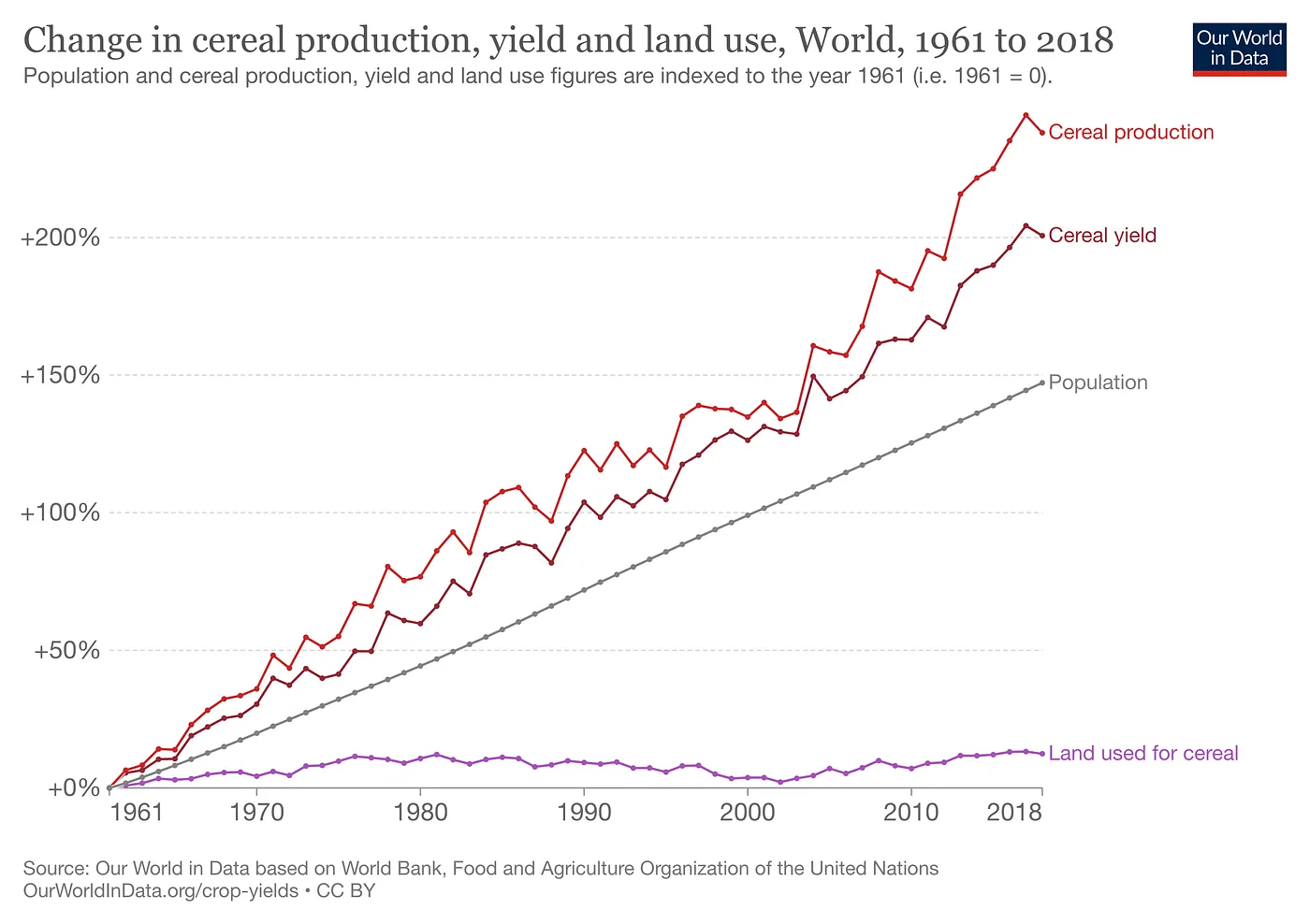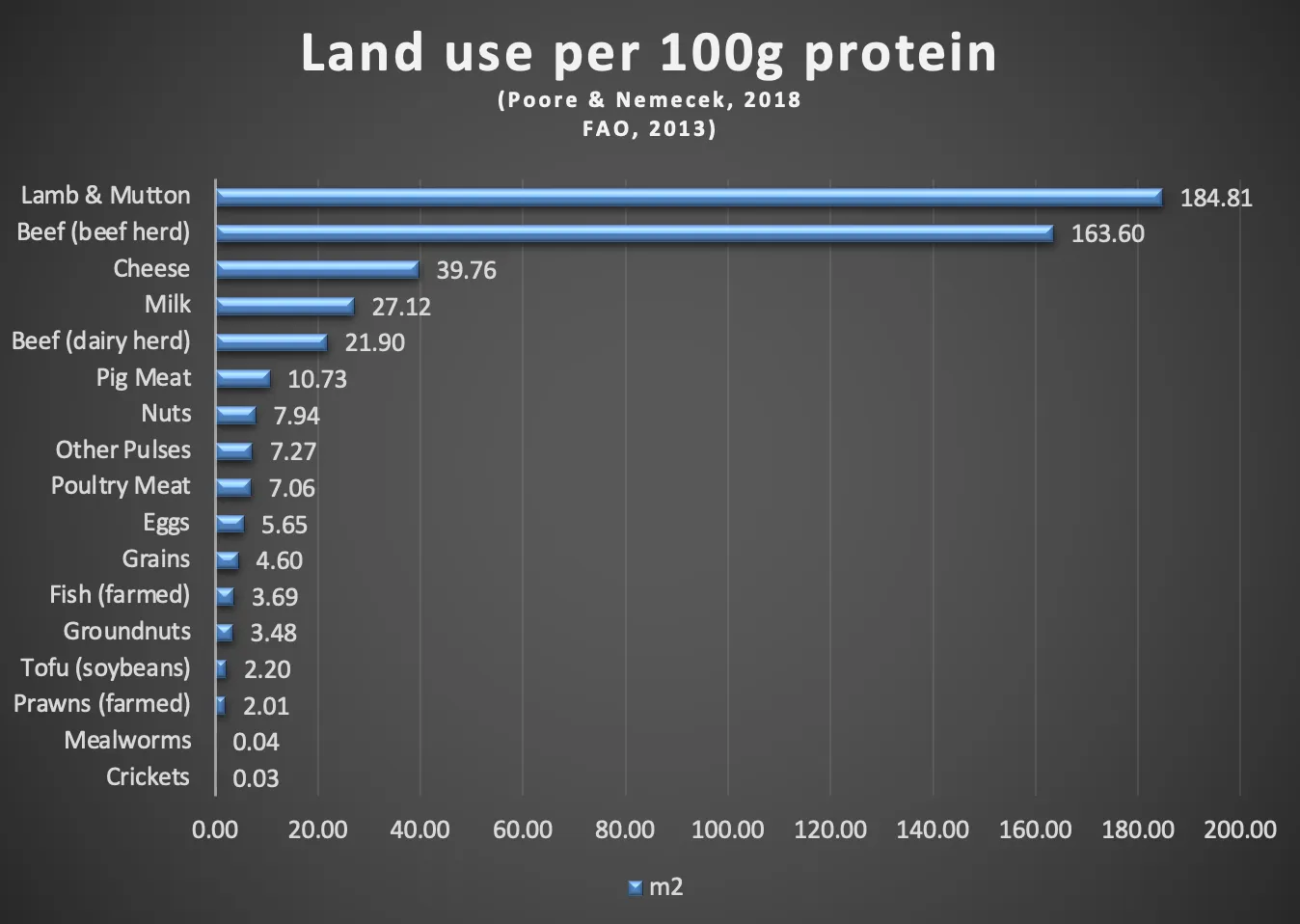How edible insects can solve the looming shortage of agricultural land 🐜
Published:
If everyone had the diet of an American, we’d need 138% of the Earth’s land to feed everyone. We must change how our agricultural land is used.

Edible insects require less space, can be stacked vertically and land does not need to be used to grow their feed. This can free up space for wild flora and fauna to repopulate our agricultural land.
Agriculture started 12’000 years ago, at the end of the last Pleistocene glacial period (Ice Age) when glaciers melted, temperatures warmed and sea levels rose. Plant domestication developed independently in different regions around these times, from cereal and figs in the Near East to rice in China and squash in the Americas. Animals were first domesticated in the Fertile Crescent and enabled the region to establish sedentary communities: this is the start of the Neolithic Revolution.
Agriculture quickly spread around the world, enabling populations to grow. Sedentary lifestyles provided a reliable and diverse food supply. Foodstuff was also stored for the winter months, traded across regions, and agricultural expertise spread.

Cropland and pasture taking over the world
Fast forward to the 19th century, where population growth was a concern for the economist Thomas Malthus. He posited that population increased geometrically (1,2,4,8,16…), while food production increased arithmetically (1,2,3,4,8…). If this population growth was left unchecked, we would not be able to feed everyone, and the world’s population would eventually slow down. The main limiting factor to our food production was the supply of land, it was finite!
What Malthus did not predict were the extraordinary technological improvements our species has made since. Intensive farming methods, mechanisation, gene engineering, pesticides, fertilisers, and countless other technologies have enabled humans to increase farming yield over the past three centuries.

Land used for cereal production stayed constant while cereal yield skyrocketed
This increased yield has done miracles for the human population, but it has not been so kind for the environment:
- Natural habitats are destroyed, 50% of our land is currently used for agriculture and 94% of the planet’s mammal biomass is livestock.
- Water is overexploited, 70% of freshwater withdrawals are used for agriculture.
- 26% of greenhouse gas emissions come from our food.
- Oceans and water sources are polluted, 78% of water eutrophication is due to agriculture. It seems that this method of production is not sustainable and will reach its limit soon. If Thomas Malthus had been alive today, he might have said that this environmental crisis is just one of these population checks. These checks are events that increase the mortality rate (war, famine, disease, poverty, natural disasters) or decrease the fertility rate (contraception, celibacy) of the population.
In addition, as the world’s consumption and living standards keep increasing, we might actually face a shortage of food due to a lack of sufficient land.

If the world had the diet of most developed countries, we wouldn’t have enough land to feed everyone
However, being the optimist that I am, I am convinced humans can find ways to maintain our food productivity while reversing our negative environmental damage. I am excited by new technological progress such as using artificial intelligence to better manage crops, precision farming techniques, lab-grown meat, and vertical farming and aquaculture systems.
Another source of hope is the alternative food sources we are developing today, such as plant-based products, algae, and especially edible insects (didn’t see that coming did you). Insects need substantially less land to be farmed. Insect populations thrive in small, humid spaces, where they reproduce fast. Crickets and mealworms need 6000 times less land than beef and 230 times less land than poultry, per 100g of protein. Insects can be put in boxes and stacked vertically, giving it (nearly) endless potential to save space.

Land use per 100g of protein by food
Moreover, insects can feed on bio-waste, improving our waste management system and reducing emissions. Also, we don’t need to use more land to grow crops to feed these animals, currently a third of current croplands are used to feed livestock.
Finally, insects do not produce waste (as you usually eat them whole), do not emit gases (like cattle do), and are more efficient in converting the energy they consume (as cold-blooded creatures, they do not lose energy keeping their bodies warm).
Edible insects are part of a wider trend towards more efficient farming in smaller spaces. With the advent of vertical farms, urban and community farms, and other farming innovations, we’ll be able to grow our food using less space and resources, which will free up land for our flora and fauna to thrive once again and reconquer the land that is theirs.
